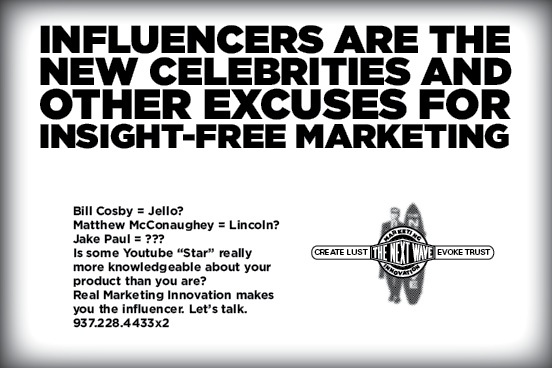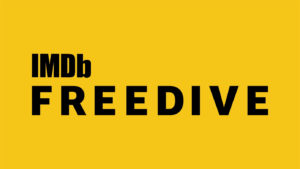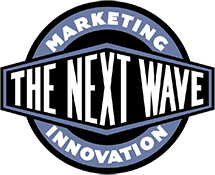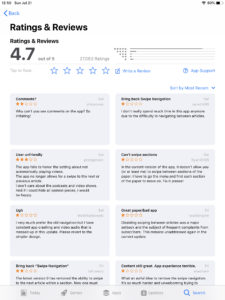Insights
Your interface is your product
The New York Times is a very good newspaper and for a long time, it’s digital product was outstanding. Then someone had the brilliant idea to change the way millions of readers had to navigate the news. Gone was swipe between stories or sections. Immediately, the app started to get 1 star ratings.
Apple carved out their niche from Microsoft early on by offering a consistent, easy to use graphical user interface. Every application behaved the same way for most functions. Command S always meant “Save” Command P was “Print” and they had “Save As” for making a duplicate version- that you could rename- until some genius thought this wasn’t needed since they’d added versions. As someone who uses documents as templates a lot- “save as” was a lot easier than “duplicate” then “rename” and then “Move to” but, alas, someone had a better idea.
Voice command is the big new thing. Talking to machines to get them to do things is all the rage, so imagine my confusion when all of a sudden my Google “Smart device” stopped shutting off the music when I said “OK Google, Off” and started saying “I’m sorry, this device doesn’t have power management tools.”
There are lots of examples of companies trying to retrain customers that may prove fatal in the long run. Apple can’t seem to understand that the new iPhones may be the fastest ever, with the longest battery life and the best cameras but, apparently either price, size or maybe the missing big button at the bottom may be changes that customers aren’t ready to accept.
When you train your customer to do things a certain way, make sure you have a very good reason before you change things, and that your customer knows why.
If there is one thing about business in the day of the internet, your competitors and their alternatives are only a google search away. Think through interface changes as carefully as you change prices, distribution, packaging, suppliers and materials. Because your product may now be your interface.
The value of creativity
Karl Lieberman and his creative partner, Brandon Henderson, had been working on the brief for Dos Equis beer for months and had work in production, when they were told to come up with more ideas, a mere two hours before a meeting with the client.
With 30 minutes to go, they landed on “The Most Interesting Man in the World” and his famous line, “I don’t always drink beer. But when I do, I prefer Dos Equis.” The spots close with the signature sign-off: “Stay thirsty, my friends.” They were actually taking the brief, which they didn’t like, to an extreme- they didn’t believe that drinking beer made you interesting, but, that’s what the brief was searching for.
You can hear a bit of Karl’s story on this episode of the “A” list podcast, and read about it more on Ad Age.
The client didn’t love it at first. They fought over casting an older man to sell beer to millennials. Somehow, the idea made it through the “idiot forest” (an expression Lee Clow uses to describe the battle an idea has to run through to get to see the light of day) and became a meme.
It also sold a lot of beer, and made the actor, Jonathan Goldsmith, famous.
Luckily, Lieberman and Henderson weren’t just working on a project for time and materials pricing. The value of that idea and the amount of beer it sold, priceless (to steal another tagline from another great campaign.)
The creative brief was pretty similar to all beer briefs- brands make a statement about the drinker, young folks still lean on these brand identifiers to help project their own personal brand. The same type of brief led Crispin Porter + Bogusky to devise “Twin Label Technology” for Molson- an ad campaign that was more than just a campaign, for Molson and one of our favorite examples of true Marketing • Innovation. This is the beauty of creativity in solving business problems. Do research, develop insight, and then find new ways to connect, often using what we call a “fundamental truth,” to create an emotional response that evokes trust and creates lust.
It was years before Nike had “Just do it.” Yet to many, it defines the brand. Three words took years to come up with. Those three words changed the brand forever.
For BMW, many would say “The Ultimate Driving Machine” was the perfect tagline- yet, for a few years, brand management moved away from it- before bringing it back.
When advertising is done right, it looks easy, it feels comfortable, and it immediately makes a connection with a consumer. That’s the value of creativity, and it should never be valued by time and materials.
Celebrities, Influencers, Reviewers and avoiding the real reason you aren’t selling more
 AdWeek tell us that influencers lead to more sales than celebrities. 22% of consumers have bought a product or service because of recommendation on social media, whereas only 12% have been persuaded to buy thanks to a celebrity endorsement. It’s across all age groups, although younger consumers are even more likely to pay attention to some social media star over a jock, actor, famous conventional person type.
AdWeek tell us that influencers lead to more sales than celebrities. 22% of consumers have bought a product or service because of recommendation on social media, whereas only 12% have been persuaded to buy thanks to a celebrity endorsement. It’s across all age groups, although younger consumers are even more likely to pay attention to some social media star over a jock, actor, famous conventional person type.
That’s all well and fine, but, influencers are just as susceptible as celebrities as doing something stupid. If brands haven’t learned from OJ Simpson, Tiger Woods, Kobe Bryant, Bill Cosby, Michael Vick (notice all these examples are black men who fell from grace) or Ryan Lochte, Michael Phelps, Jared Fogle, or Donald Trump for anything… they will start to learn that you can’t buy a perfect endorsement from a human.
When the flow of information was limited, publications like “Consumer Reports” or “Stereo Review” or “Car and Driver” were the go-to platforms for comparative insight in the purchasing process. Now, consumers are more likely to trust an anonymous amateur posting unvetted reviews to Amazon or BHPhoto.com in making their purchasing decision.
When it comes to restaurants, it’s not just the Michelin or Mobile guide, it’s Yelp, Trip Advisor, FourSquare, Google reviews etc. Everyone is a critic. And, since we’re all consumers subjected to a barrage of marketing and advertising, we’ve all become experts at that too.
Except we really haven’t. The best marketing, advertising, campaigns, word of mouth and sales growth aren’t any more accidental than before the age of the internet in your pocket. Smart marketing still grows out of better insight into what makes the consumer lust for your product or service. Universal truths still hit home. Selling someone without making it obvious still outperforms the most expensive campaigns.
How do you find that secret sauce that propels your brand to the forefront? By knowing your customer and making sure you solve the problem they perceive they have better than anyone else. It’s why you are in the business you are in. You should be the expert.
Once Nike figured out they were in the aspirational motivation business instead of the sneaker business- everything else fell into place. Apple wasn’t in the computer business- they were in the bicycles for your mind business (wish they’d rediscover that lately). Barack Obama wasn’t a politician as much as he was the promise of Hope and Change. Donald Trump (for equal time) was in the “Make America Great Again” business.
We’re not in the advertising business- we’re in the Trust and Lust business. What business are you in?
Amazon Freedive isn’t about ad revenue
 Listening to APM Marketplace discuss the announcement of the new Amazon Freerive service that’s teamed up with IMDB, they talked about the value to Amazon and the content providers through ad support. Trust us, this has nothing to do with ad dollars coming in, but more about acquiring more data about potential Amazon shoppers who may not be buying from Amazon now.
Listening to APM Marketplace discuss the announcement of the new Amazon Freerive service that’s teamed up with IMDB, they talked about the value to Amazon and the content providers through ad support. Trust us, this has nothing to do with ad dollars coming in, but more about acquiring more data about potential Amazon shoppers who may not be buying from Amazon now.
Amazon spends a lot of money with Google for ads now to drive sales, and what Freedive does is gives them yet another way to refine data about people who aren’t in their ecosystem due to cost. Amazon Prime isn’t for everyone. And there is a large part of America that can’t afford Netflix, Hulu, and all the other streaming services, yet still have a cell phone. Netflix has partnered with T-Mobile to offer free Netflix to it’s subscribers, and with the impending merger of T-Mobile with Sprint, Amazon may have to renegotiate wireless partners - Kindles used to be connected via Sprint but are now with AT&T and Prime can be bundled with Sprint Cell service. It’s starting to get messy.
But, the fact remains, the number one advertiser on Freedive will probably be Amazon, which already sells ads on their platform to manufacturers and retailers- and may bundle in ads on Freedive. Ultimately, Amazon still understands that ad supported content has value- especially when driven by digitally connected devices. Freedive is the future of broadcast television- with consumer level targeting of ads, with instant feedback. The real question is will they allow you to skip an ad to replace it with one you are interested in? That’s the holy grail of targeted ad platforms.
Amazon understands that while subscriptions are great for somethings, after a while, your subscriptions will start to show up on your credit report at the rate we’re going. You subscribe to software like Adobe Creative Suite or Microsoft Office to work, you subscribe to an ISP to provide the data, you subscribe to Netflix for movies, Prime for shopping, a wireless company for cell service (note- 5G could kill off ISPs) Dollar Shave Club for razor blades, Blue Apron for meals, the list goes on.
At some point, consumers can only bear so many monthly bills outside of rent/mortgage, utilities, insurance, transportation expenses etc.
Ad supported media may be making a comeback. Freedive isn’t the first and won’t be the last. At some point, Facebook may suffer some rejection by users who aren’t being compensated for their content on the platform. And while Netflix is a subscription- an ad supported version may not be far off.
That this is teamed up with IMDB and not clearly an Amazon product is another stroke of smarts. IMDB is an incredible viable and valuable online community where the contributors share knowledge willingly without compensation. This service only rewards them and helps support their site. One day, Wikipedia may have to look at this model as well.
When Amazon’s CEO Jeff Bezos bought the Washington Post and offered subscriptions for $100 a year (and a discount to Prime Members), it should have been viewed as just another way to connect consumers with the retail giant and providing data for targeting. At half the price of the NY Times, the difference becomes that the owners of the NY Times don’t have a mega-advertiser subsidizing them. Look for Amazon/Bezos to expand their newspaper holdings to gain eyeballs for Amazon ads.
Ad revenue might be driving the bottom line for Facebook and Alphabet for the folks on Wall Street- but, the real goldmine is and always be the connection of data with an individual consumer for targeting. Freedive will do just fine for Amazon, even if the ad revenue never amounts to much. Increased sales for nominal extra costs are a good thing for Amazon.

